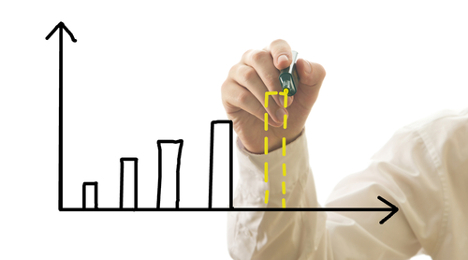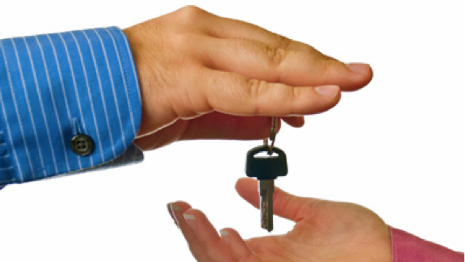When it comes to smaller new-car segments, one of the trends at play in the slowdown is “an affordability issue,” says Autotrader senior analyst Michelle Krebs.
“There are just many consumers who are being frozen out of the new-car market,” Krebs said during the Q&A portion of sales day conference call with the media on Tuesday. “And I think it’s having some impact, especially on that small-car market, because that’s where you’d typically see very budget-minded people going to.
“And people are keeping their cars longer, so it suggests that … consumers are challenged at that end of the market, too, financially,” she said.
So, where are those would-be buyers who are “frozen out” going? Are they turning to late-model and certified pre-owned, or perhaps heading toward independent dealer lots? Or are they out of the game altogether?
“We haven’t broken out who’s doing what, but we certainly think that it’s a factor, because wages have not gone up and yet prices of everything — health care, education, et cetera — have gone up, as have car prices,” Krebs said. “And so people are holding on to their cars longer.”
Citing Polk data, she said the average age of a vehicle on the road is 11.5 years old, adding that “despite record new-car sales, that’s gone up.”
“And we are seeing a robust used-car market. So they’re either not playing the game yet or they are buying used,” she said. “So, I think a lot of those might have been a possibility for the compact market, and they’re just frozen out.”
Global auto sales rose by 10 percent in September — the biggest monthly gain in three years.
According to Scotiabank’s recently release Global Auto Report, Asia led the way in September’s increase, with purchases of new vehicles climbing 21 percent higher than a year ago. China saw a 32-percent spike in volumes, marking that country’s fourth consecutive monthly gain above 20 percent.
Volumes were strong across Europe, and double-digits gains in 11 Eastern European nations helped to offset continued declines in Russia.
Weakness continues in Brazil, which has been one of the weakest markets in recent years. Sales have fallen by nearly 50 percent since 2013, and nearly 20 percent year to date. However, the pace of the declines is expected to soften next year. While economic growth is expected to resume in Brazil next year, this may be enough simply to halt the pace of decline.
Sales in Canada bounced back in September, with several automakers reporting records for the month. Scotiabank estimated September new-car sales at 1.96 million — well above the 1.89 million average for the past two months, but marginally below the year-ago average for September.
A look at the U.S.
The U.S. saw an annualized 17.7 million new units in September, up from less than 17 million a month prior and an average of 17.2 million during the previous eight months.
Scotiabank predicts that September’s performance combined with strong preliminary estimates for October keep the industry on target to set a second consecutive annual sales record. Another moderate increase is likely in 2017, thanks to a solid labor market, rising incomes, low interest rates and fuel prices.
Meanwhile, in its new car sales forecast for September, Edmunds.com projected a September seasonally adjusted annual rate (SAAR) of 17.5 million. For October, Edmunds predicts a SAAR of 17.8 million.
Edmunds.com projects that 1,356,250 new cars and trucks will be sold in the U.S. in October, representing a 5.2-percent decrease from September 2016, and a 6.8-percent decrease from October 2015. The 17.8 SAAR, however, would tie for the highest single month sales rate in 2016.
At the same time the dealer group made grand announcements about significant broadening of its used-vehicle operations, AutoNation wrapped up the third quarter by keeping its gross profit on its used-car retail sales intact on a year-over-year basis.
AutoNation reported on Friday that its Q3 gross profit per used vehicle retailed through its dealer network ticked up by $6 to come in at $1,519. Through the first nine months, that per-unit gross is off a bit year-over-year, softening by $64 to settle at $1,555.
While confident about its used potential to make aggressive plans, AutoNation’s used-vehicle retail sales figure in the third quarter did come in a little lower compared to what the company’s stores generated during the same time period in 2015. AutoNation retailed 55,760 units in Q3, which was 1,616 units less than a year earlier.
Through the first three quarters of 2016, AutoNation has turned 170,500 used vehicles, which is 1.7 percent off of the pace the group enjoyed a year ago.
Helping the company overcome any struggles it might be having in moving used metal is what AutoNation is producing in the F&I office. The company reported a $48 lift in F&I gross profit per unit during Q3 as the reading jumped to $1,594.
Through three quarters, AutoNation indicated that its F&I gross per unit stands at $1,601, representing a 4.7-percent improvement year-over-year.
On the new-model side, AutoNation sustained third-quarter decreases in both unit sales (down by 3.2 percent to 88,322 vehicles) and gross per unit (down 6.1 percent to $1,791).
Altogether, AutoNation reported that its Q3 net income from continuing operations totaled $108 million, or $1.05 per share, compared to net income from continuing operations of $119 million, or $1.05 per share, for the same period in the prior year.
The company estimated that the Takata airbag recall negatively impacted Q3 net income from continuing operations by approximately $6 million after-tax, or $0.06 per share.
At the end of the third quarter, approximately 14 percent of AutoNation's used vehicle inventory was on hold due to the Takata airbag recall.
“Certain manufacturers continued disruptive marketing and sales incentives, which resulted in multi-tier pricing and were unfair for consumers as well as retailers,” AutoNation chairman, chief executive officer and president Mike Jackson said in a news release.
“In the third quarter, these incentives had a significant negative impact on new vehicle volume and gross profit per new vehicle retailed."
Along with releasing its latest financial statement, AutoNation also highlighted that it added more dealerships to its portfolio.
AutoNation announced the acquisition of three premium luxury franchises as well as the awarding of three premium luxury franchise add points with combined anticipated annual revenues of approximately $430 million once the add points are fully operational.
With the addition of the six premium luxury franchises, AutoNation will own and operate a total of 96 premium luxury franchises from coast to coast.
The dealerships already running include:
—BMW of Vista, located in San Diego. It’s the second BMW store in the San Diego market and 15th BMW store nationwide. The store represents annual revenue of approximately $60 million and 1,200 retail new and used vehicle unit sales
—Jaguar Bethesda and Land Rover Bethesda, located in Bethesda, Md. It’s the 10th store in the Baltimore/D.C. market and the eighth Jaguar/Land Rover store nationwide. AutoNation claimed it’s also the largest Jaguar Land Rover showroom in the United States. The transaction is expected to close in the fourth quarter and represents annual revenue of approximately $80 million and 1,000 retail new and used vehicle unit sales. The acquisition is subject to customary terms and conditions, including manufacturer approval.
AutoNation’s add points are:
—BMW of Delray Beach, located in Palm Beach County, Fla. It’s the first BMW franchise in South Florida and 25th premium luxury franchise in Florida. The company said it is expected to open during the second half of 2018 with anticipated annual revenue of approximately $180 million once fully operational.
—Jaguar West Houston and Land Rover West Houston, located in Houston. It’s the first Jaguar Land Rover store in Texas and 10th premium luxury store in Texas. It’s also expected to open in the second quarter of 2018 with anticipated annual revenue of approximately $100 million once fully operational.
“These acquisitions and awarded franchises present outstanding premium luxury growth opportunities and enhance manufacturer brand representation in markets with excellent premium luxury demographics and within our existing footprint,” Jackson said.
“We look forward to welcoming the BMW of Vista, Jaguar Bethesda and Land Rover Bethesda customers and 165 new associates to AutoNation,” he went on to say.
Penske Automotive Group saw its revenue increase 3.9 percent to $5.2 billion in the third quarter — one the company said was again marked by record results.
“Our business continued to perform well in the third quarter, producing another quarter of record results despite the translation effects from foreign currency headwinds,” chairman Roger Penske said in a news release.
Excluding foreign exchange, revenue grew by 9.7 percent.
During a conference call Tuesday, Penske outlined the company’s Q3 results on the used side.
Looking at U.S., U.K., Germany and Italy operations, Penske sold 52,536 retail used vehicles, a 3-percent increase year-over-year.
Gross profit per used vehicle was $1,592 for the quarter, down from $1,652 a year ago.
Penske said that in the U.S., however, he was “particularly pleased” to see gross profit per used unit increase by $179 — $52 for new units.
Gross margin was 5.8 percent, down 20 basis points.
Q3 used-retail revenue was $1.440 million, up from $1.394 million a year ago. Retail used gross profit was $83.7 million, a decrease from $84.3 million a year ago.
Used inventory in the U.S. was at a 41 days’ supply as of Sept. 30.
As far as stop-sale inventory in the U.S., Penske said it was about 1,600 units representing roughly $41 million. A minimal amount of inventory is on stop sales internationally, Penske said.
Year to date, Penske has sold 158,213 used vehicles globally, a 6.4-percent increase.
Gross profit per used vehicle was $1,629, down from $1,732 for the nine-month period a year ago.
Used retail revenue year to date is $4.331 million, up from $4,060 million. Retail used gross profit was $257.8 million, nearly even with a year ago.
Return to Auto Remarketing for a look at how Penske sees itself benefitting from lease returns.
When the clock strikes midnight on Halloween, the pre-owned side of the car business may been in for a treat.
Industry observers have released their expectations for used-car sales in October, calling for figures well above 3 million units.
TrueCar said used-car sales could approach 3.29 million units for the month, which would be a 10.5-percent year-over-year increase.
Edmunds.com is forecasting about 3.2 million used-car sales this month, which would translate to a 38.7 million SAAR. Those would be even with September figures, according to Edmunds.
Both Edmunds’ and TrueCar’s forecasts include sales from independent and franchised dealers plus private-party sales.
On a dealer level, the latest quarterly presentation from Cox Automotive chief economist Tom Webb — citing the National Automobile Dealers Association — predicts that franchised dealers will sell more than 15 million used units this year, while independents will sell more than 14 million.
Both of those figures would be up from 2015 and continue multi-year growth patterns.
Lithia Motors is challenging 68 stores within its dealership group to improve. Otherwise, change will come — if it hasn’t already.
During the company’s conference call to discuss its third quarter results — which included a 13-percent gain in used-vehicle retail sales — Lithia president and chief executive officer Bryan DeBoer indicated the company made 19 store leadership changes within the past 60 days. Of that group, 12 adjustments happened at Lithia stores while the other seven came within its DCH division.
“We believe that’s indicative of the health of our ability to grow people, which I think will come through in the coming quarters,” DeBoer said. “We are going to continue to accelerate the development of our teams to continue to build and drive the performance of our organization upward.
“In fact, I think to summarize this, we’ve had 68 stores so far year to date that we believe have considerable profit potential,” he continued. “And when I mean considerable, we’re talking about that they are currently operating at 25 percent to 75 percent of their potential earnings. That means in those 68 stores, we could double or triple our earnings.
“This is a combination of new stores and underperformance, and that to us means that even though we are able to grow people, and even though we may be ahead of the eight ball and we are buying stores, it means that there is still 68 opportunities that are pivotal,” DeBoer went on to say.
When DeBoer explained those aggressive improvement objectives, a Wall Street observer questioned Lithia management about whether the dealer group could maintain its top-line performance, which most recently included the highest third-quarter revenue and earnings per share in its history. The concern stemmed the possibility of a sales downturn next year.
“That’s a good question,” DeBoer acknowledged. “What I would say is about two-thirds of those stores have great leadership in them. They just haven’t found their way with their team. So they are in the process of building their team, but I think they are agile enough leaders that they understand and if, God forbid, there was a hard recession … then I think that they still have the ability to respond.
“A lot of it again comes from the ideas of productivity and efficiency within your people,” he continued. “Ability to sell those used cars and develop your F&I, I think those are really the fundamental drivers that make you more recession-proof.
The service and parts business is obviously where many of those stores still haven’t hit stride, which does take a little bit longer,” DeBoer added. “But ultimately even in a recessionary period, you should be able to still grow your used cars and stabilize your team and grow business.”
And Lithia will be looking to grow as its overall footprint is bigger. Through October of this year, the company completed the acquisition of 14 stores and opened one store: the Carbone Auto Group, a nine-store platform based in New York and Vermont; a Subaru store in Riverside, Calif., a Toyota store in Milford, Mass., a Ford store in Thousand Oaks, Calif., a Volkswagen store in Freehold, N.J., a Ford store in Casper, Wyo., and an Audi store in Calabasas, Calif.
“As we have previously discussed, the benefit of a moderating new vehicle sales environment is the rationalization of acquisition price expectations,” DeBoer said. “We have added over $1.0 billion in estimated annualized revenue so far this year, and are optimistic that a significant number of targets remain available.
“By seeking stores where opportunities to improve performance are plentiful, we position ourselves to purchase at attractive multiples and generate industry-leading return on investment,” he continued. “Additionally, our low leverage ratio should ensure borrowing capacity to remain acquisitive through the vehicle sales cycle."
The used-vehicle department at Lithia Motors turned in another sterling performance during the third quarter as the dealer group reported double-digit improvements in both same-store and overall used-retail sales.
On a same-store basis, Lithia indicated the rise came in at 11 percent. Altogether, group stores retailed 29,636 units during Q3, representing a 13-percent jump year-over-year.
What Lithia accomplished with its used division helped the company generate the highest third-quarter revenue and earnings per share in its history.
The company shared when it released its Q3 financial statement on Thursday that unadjusted net income totaled $54.0 million, or $2.14 per diluted share. That’s up from $43.4 million, or $1.64 per diluted share, for the third quarter of last year.
Lithia calculated that adjusted net income for the third quarter was $52.0 million, or $2.06 per diluted share, compared to the year-ago figures of $53.6 million, or $2.03 per diluted share.
The company’s Q3 revenue increased by 9 percent, or $185.1 million, to $2.3 billion.
Helping to enhance that figure was how Lithia’s dealerships turned new metal, too. The company turned 38,417 new models during Q3, marking a 2.7-percent lift year-over-year.
While Lithia retailed more units both in the used and new departments during Q3, the dealer group saw gross profit per unit soften a bit again. On the new side, grosses dipped by 4.3 percent to $1,974 while used grosses ticked 2.3 percent lower to $2,322.
Helping to offset that pressure was how Lithia’s F&I gross profit per unit posted a 7-percent jump to come in at $1,289.
Looking ahead, Lithia leadership rattled off a wide array of projections for 2017, which included:
—New vehicle same store sales increasing 1.5 percent
—New vehicle gross margin of 5.5 percent to 5.7 percent
—Used-vehicle same-store sales increasing 5.5 percent
—Used-vehicle gross margin of 11.5 percent to 11.7 percent
—Finance and insurance gross profit of $1,270 to $1,295 per unit
“Though considerable opportunities remain, we delivered record results in the third quarter,” Lithia president and chief executive officer Bryan DeBoer said in the company’s news release accompanying its Q3 results. “Our store leadership increased revenue in all departments, though selling expense grew slightly.
“In the moderating new vehicle sales environment, sustaining sales volume and taking market share from our competitors is crucial to future incremental used vehicle and service transactions, and maintains high performance levels for our manufacturer partners to earn continued support for acquisitions,” DeBoer continued.
“Our entrepreneurial leaders are adjusting to the dynamic marketplace and will seek continued earnings growth in the future,” he went on to say.
Executive promotions
Lithia also mentioned some top executive moves when it shared its Q3 report.
Effective Jan. 1, Chris Holzshu, who currently is senior vice president and chief financial officer, will be promoted to executive vice president and chief human resources officer.
Meanwhile, John North, who currently serves as vice president of finance and chief accounting officer, will be promoted to senior vice president and chief financial officer.
“Given our ambitious growth objectives, ensuring we maximize employee potential to further improve our performance-based culture is critical to our success,” DeBoer said.
“Chris' promotion emphasizes the importance of each and every team member and how accelerating employee development to earn customers for life is vital to our future,” DeBoer continued. “As executive vice president, Chris will lead our human resource, information technology and store administration teams.
“Additionally, I am pleased with the success of our leadership development as demonstrated by John's promotion to CFO,” DeBoer went on to say. “Both Chris and John exemplify our core values of continuous improvement and personal ownership.
“On behalf of the entire organization and our board of directors, congratulations,” he added.
Group 1 Automotive saw a 2.2-percent bump in its used vehicle revenues during the third quarter, thanks to higher unit sales.
When eliminating for the effects of exchange rate fluctuations, i.e. adjusting for constant currency, that increase was 4.8 percent.
Consolidated results (representing the company’s U.S. and international operations) for the three months ended Sept. 30 show that Group 1 retailed 33,012 used units, a 1.6-percent increase from the same period a year ago.
During a conference call with investors, president and chief executive officer Earl Hesterberg said the average used-vehicle selling price increased 0.6 percent (3 percent on a constant currency basis. Used-vehicle retail gross profit increased 2.9 percent (1.1 percent on a constant currency basis).
In the U.S., Group 1 retailed 27,201 used units in the third quarter, down 1.7 percent from a year ago. But for the first nine months of the year, U.S. used units sales were at 80,888, up 1.6 percent year over year.
Gross profit per used vehicle was $1,441 in the third quarter — down slightly from last quarter but with what the company anticipated for the latter half of the year.
Hesterberg noted that U.S. used-vehicle inventory stood at 13,500 units, representing a 33-day supply. As far as units under a stop sale, he said that was less than 4 percent of used inventory.
Responding to a question from an investor later on in the call, Hesterberg said the increase in used supply does put some pressure on margins.
“But the good news is, the used-vehicle market appears to be quite strong, even in a market like Oklahoma, where new-vehicle sales were down 18 percent but used were down only 2 percent to 3 percent, and some months the market is still somewhat flat on used. But yes, there is more supply, which will give us some volume opportunity, but will probably have a little bit of margin trade-off.”
Another investor asked what Group 1 was seeing in terms of leasing, given that the industry sits north of 30-percent lease penetration and is bracing for a flood of end-of-term vehicles to begin hitting the market.
“My impression is that OEMs are starting to back off or slow down a little bit on leasing,” Hesterberg said, adding that “leasing is not as big for us because of our geographic concentration in the South Central U.S., where it’s about 17-percent leasing, whereas the industry is, as you say, closer to 30 percent. So it’s not the same concentration for us, because leasing is quite heavy in the northeastern U.S. and California.
“But with used-car values likely having peaked sometime in the past, my impression is the OEMs are starting to become a little more prudent about how aggressive they get in pushing higher levels of leasing.”
When the calendar rolled past the close of the third quarter this past Friday, certified pre-owned sales reached the second-highest quarterly figure ever.
Autodata Corp. reported on Tuesday that Q3 CPO sales came in at 675,725 units, representing a 3.4-percent lift year-over-year.
Looking at the quarterly data from a sequential viewpoint, Q3 marked just a 0.4 percent softening from the second-quarter amount that just happened to be the best quarterly figure ever.
The industry compiled the third-quarter figure by turning 208,070 CPO units in September. That amount marked a 1.4-percent softening versus September of last year. Though there weren’t any all-records reported during September, Cadillac reported its strongest certified sales in nearly seven-and-a-half years, Autodata said.
Perhaps the CPO market might have set a new quarterly record for the second stanza in a row had September sales not lost some steam to close Q3. Autodata pointed out last month’s figure marked a 10.8-percent drop-off versus August.
Autodata also mentioned there were 25 selling days in September of this year as compared to 26 in August. A year ago, there also were 25 selling days.
The September 2016 daily selling rate was down 1.4 percent from a year ago and down 7.2 percent from a month earlier.
CarMax saw a 7-percent bump in total used unit sales during the second quarter, and a 5.4 percent increase year to date.
Gross profit per used unit at $2,160 remained consistent with $2,166 in the second quarter of last year.
Meanwhile, wholesale unit sales declined by 1.3 percent in the second quarter, which president and chief executive officer Bill Nash attributed to a calendar issue.
“Compared to the second quarter of last year, we had one less Monday this quarter, and approximately 55 percent of our auctions take place on Mondays,” he said during a conference call with investors. Barring that, he said, he estimated this year’s wholesale vehicle unit sales growth would have been 1.4 percent year-over-year.
“Gross profit per wholesale unit decreased to $870 compared to the gross profit per unit of $951 last second quarter,” Nash continued. “Last year's gross profit per unit was exceptionally strong, so it was a tough comparison.”
CarMax also reported that net sales and operating revenues increased 2.9 percent to $4.00 billion, and that net earnings declined $9.9 million, or 5.7 percent, to $162.4 million, while net earnings per diluted share rose 2.4 percent to $0.84.
Used unit sales in comparable stores increased 3.1 percent, which Nash said was driven by a strong improvement in conversion but was partially offset by a decline in traffic.
“As we discussed last quarter, we believe our decrease in traffic was largely due to the continuation of less traffic from customers at the lower end of the credit spectrum,” he said, noting that used unit comps for non-Tier 3 customers were significantly stronger this quarter at more than 8 percent.
Tom Reedy, vice president and chief financial officer, said that “consistent with recent quarters, we experienced a year-over-year increase in credit applications from customers at the higher end of the credit spectrum and a decline across the lower end.”
As far as that decline, he said CarMax was seeing it on both the application and the approval side, estimating 40 percent and 60 percent, respectively.
Nash noted that as a percentage of sales mix this quarter, zero- to 4-year-old vehicles fell to 76 percent compared to 79 percent last year as a result of higher customer demand for older and less expensive vehicles.
He reported that CarMax opened three stores during the second quarter: El Paso, Texas and Bristol, Tenn. (new markets) as well as Boston. A fourth store, in Boise, Idaho, was opened subsequent to the end of the second quarter.
Plans are to open five additional stores during the third quarter. Four will be in current markets — Philadelphia, Orlando, and two in San Francisco — with one in Grand Rapids, Mich., a new market.
In total, the company said it plans to have opened 16 stores in the 12 months following Aug. 31.
Nash noted that CarMax had previously run a small test on home delivery. The company is now conducting a larger test in the Charlotte, N.C., market
“Through this test we hope to learn the best ways to further operationalize this offering and deliver our hallmark exceptional customer service experience outside the store,” he said.
During a post-call question-and-answer period, an investor asked whether CarMax is seeing relief on the supply side.
“I think the expectations were that was going to be coming back more in full force at this point and continue on later into next year and in the year after,” Nash said.
“We really haven't seen a big, huge increase in the supply of late-model cars. I think there is some coming out there, but we haven't seen the big increase that I think was originally expected. We think it will come; our external partners being the auctions think they will come later this year into next year and even the year after.”
The same investor asked for speculation on what is driving the acceleration in used-car unit comps.
“First of all, we are encouraged by the overall comps of a little over 3 percent. We are equally encouraged that we got that, even with the headwind that we faced in the tier 3 space. So, again, if you looked at just the non-tier 3 sales, it was really at 8 percent,” Nash responded.
“I think really what you are seeing is the culmination of a bunch of different initiatives and better execution at the store level. I can’t pinpoint it to necessarily one thing that’s driving comps this quarter over last quarter. I think it’s the culmination of some of the strategic initiatives that we have been talking about and I think also just better execution at the store level.”












